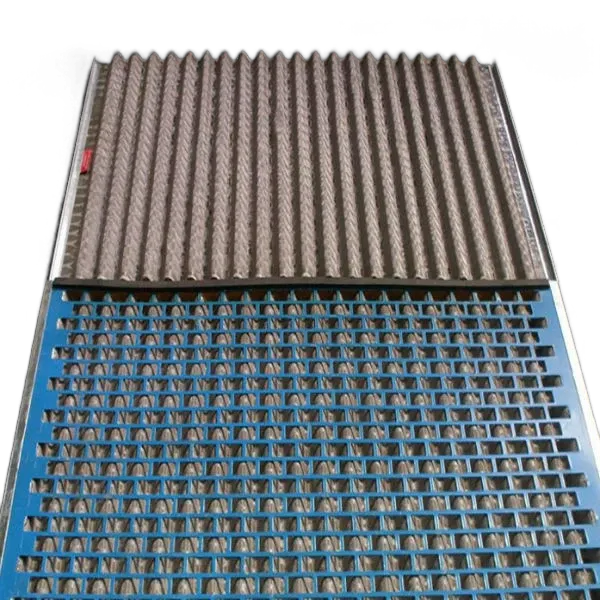- Industrial zone, South of Anping Town, Hengshui, Hebei, China.
- sales@hfpetromesh.com
- +86-18931809706
 Afrikaans
Afrikaans  Albanian
Albanian  Amharic
Amharic  Arabic
Arabic  Armenian
Armenian  Azerbaijani
Azerbaijani  Basque
Basque  Belarusian
Belarusian  Bengali
Bengali  Bosnian
Bosnian  Bulgarian
Bulgarian  Catalan
Catalan  Cebuano
Cebuano  Corsican
Corsican  Croatian
Croatian  Czech
Czech  Danish
Danish  Dutch
Dutch  English
English  Esperanto
Esperanto  Estonian
Estonian  Finnish
Finnish  French
French  Frisian
Frisian  Galician
Galician  Georgian
Georgian  German
German  Greek
Greek  Gujarati
Gujarati  Haitian Creole
Haitian Creole  hausa
hausa  hawaiian
hawaiian  Hebrew
Hebrew  Hindi
Hindi  Miao
Miao  Hungarian
Hungarian  Icelandic
Icelandic  igbo
igbo  Indonesian
Indonesian  irish
irish  Italian
Italian  Japanese
Japanese  Javanese
Javanese  Kannada
Kannada  kazakh
kazakh  Khmer
Khmer  Rwandese
Rwandese  Korean
Korean  Kurdish
Kurdish  Kyrgyz
Kyrgyz  Lao
Lao  Latin
Latin  Latvian
Latvian  Lithuanian
Lithuanian  Luxembourgish
Luxembourgish  Macedonian
Macedonian  Malgashi
Malgashi  Malay
Malay  Malayalam
Malayalam  Maltese
Maltese  Maori
Maori  Marathi
Marathi  Mongolian
Mongolian  Myanmar
Myanmar  Nepali
Nepali  Norwegian
Norwegian  Norwegian
Norwegian  Occitan
Occitan  Pashto
Pashto  Persian
Persian  Polish
Polish  Portuguese
Portuguese  Punjabi
Punjabi  Romanian
Romanian  Russian
Russian  Samoan
Samoan  Scottish Gaelic
Scottish Gaelic  Serbian
Serbian  Sesotho
Sesotho  Shona
Shona  Sindhi
Sindhi  Sinhala
Sinhala  Slovak
Slovak  Slovenian
Slovenian  Somali
Somali  Spanish
Spanish  Sundanese
Sundanese  Swahili
Swahili  Swedish
Swedish  Tagalog
Tagalog  Tajik
Tajik  Tamil
Tamil  Tatar
Tatar  Telugu
Telugu  Thai
Thai  Turkish
Turkish  Turkmen
Turkmen  Ukrainian
Ukrainian  Urdu
Urdu  Uighur
Uighur  Uzbek
Uzbek  Vietnamese
Vietnamese  Welsh
Welsh  Bantu
Bantu  Yiddish
Yiddish  Yoruba
Yoruba  Zulu
Zulu
- Afrikaans
- Albanian
- Amharic
- Arabic
- Armenian
- Azerbaijani
- Basque
- Belarusian
- Bengali
- Bosnian
- Bulgarian
- Catalan
- Cebuano
- Corsican
- Croatian
- Czech
- Danish
- Dutch
- English
- Esperanto
- Estonian
- Finnish
- French
- Frisian
- Galician
- Georgian
- German
- Greek
- Gujarati
- Haitian Creole
- hausa
- hawaiian
- Hebrew
- Hindi
- Miao
- Hungarian
- Icelandic
- igbo
- Indonesian
- irish
- Italian
- Japanese
- Javanese
- Kannada
- kazakh
- Khmer
- Rwandese
- Korean
- Kurdish
- Kyrgyz
- Lao
- Latin
- Latvian
- Lithuanian
- Luxembourgish
- Macedonian
- Malgashi
- Malay
- Malayalam
- Maltese
- Maori
- Marathi
- Mongolian
- Myanmar
- Nepali
- Norwegian
- Norwegian
- Occitan
- Pashto
- Persian
- Polish
- Portuguese
- Punjabi
- Romanian
- Russian
- Samoan
- Scottish Gaelic
- Serbian
- Sesotho
- Shona
- Sindhi
- Sinhala
- Slovak
- Slovenian
- Somali
- Spanish
- Sundanese
- Swahili
- Swedish
- Tagalog
- Tajik
- Tamil
- Tatar
- Telugu
- Thai
- Turkish
- Turkmen
- Ukrainian
- Urdu
- Uighur
- Uzbek
- Vietnamese
- Welsh
- Bantu
- Yiddish
- Yoruba
- Zulu
steel drainage grates
The Significance of Steel Drainage Grates
Steel drainage grates play a crucial role in urban infrastructure, providing effective solutions for managing surface water runoff and ensuring the longevity of streets and pavements. These critical components can be found in various applications, including roadways, parking lots, parks, and industrial sites. Their design and material properties make them an ideal choice for maintaining optimal drainage while preventing accidents and damage.
One of the most prominent benefits of steel drainage grates is their durability. Steel is known for its strength and resistance to wear and tear, making it suitable for heavy traffic areas. Unlike plastic or cast iron grates, steel grates can withstand the weight of vehicles without bending or breaking, ensuring long-term functionality. Furthermore, they are less susceptible to corrosion, especially when treated with protective coatings, allowing them to endure harsh weather conditions and environmental stressors over time.
In addition to durability, steel drainage grates contribute to improved safety. Proper drainage is essential for preventing water accumulation, which can lead to hazardous conditions such as hydroplaning for vehicles or slipping hazards for pedestrians. By efficiently channeling water away from critical areas, steel grates help maintain a safer environment. They are often designed with slip-resistant surfaces to further enhance user safety, providing grip for foot traffic even in wet conditions.
steel drainage grates

Moreover, the design of steel drainage grates is versatile, accommodating a variety of aesthetic preferences and functional needs. They can be customized to fit different styles of urban development, combining both utility and visual appeal. Many municipalities invest in attractively designed grates that can complement their architectural landscape while serving their functional purpose. This aesthetic consideration not only enhances the appearance of streets and public spaces but also encourages responsible maintenance and care from local communities.
Another essential aspect to consider is the environmental impact of steel drainage grates. Effective drainage systems help manage stormwater runoff, which can carry pollutants into water bodies. Steel grates facilitate the filtering of debris, preventing larger contaminants from entering the drainage system. Moreover, many steel grates are manufactured using recycled materials, promoting sustainability and reducing the carbon footprint associated with their production.
In conclusion, steel drainage grates are indispensable components of urban infrastructure, offering durability, safety, aesthetic appeal, and environmental benefits. Their ability to efficiently manage surface water while contributing to the overall safety and functionality of roadways and public spaces underscores their importance in modern city planning. As urban areas continue to expand, the role of these grates will undoubtedly remain significant, ensuring that municipal systems are both effective and environmentally responsible.
-
Welded Steel Bar Grating: The Rugged Industrial Flooring Solution Built for Load and LongevityNewsJun.24,2025
-
Steel Walkway Grating: Reliable, Resilient, and Built for Every StepNewsJun.24,2025
-
Shale Shaker Screen for Sale: Optimize Drilling Efficiency with Precision Screening PowerNewsJun.24,2025
-
Shaker Screen for Sale: Elevate Your Drilling Efficiency with Durable Separation SolutionsNewsJun.24,2025
-
Press Locked Steel Grating: Industrial Strength with Precision Fit for Heavy-Duty ApplicationsNewsJun.24,2025
-
Perimeter Safety Netting: The Critical Safety Upgrade for Every HelipadNewsJun.24,2025